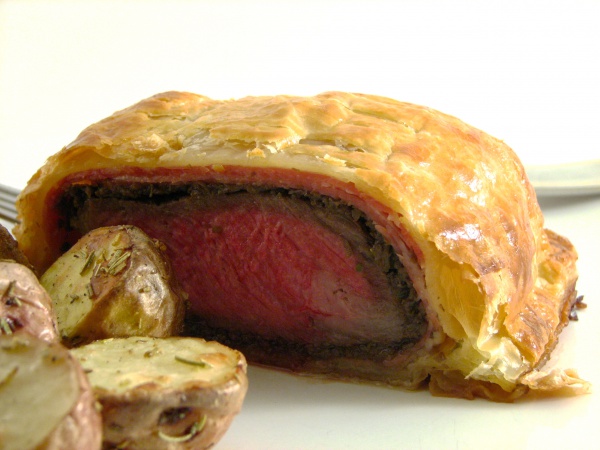Facts About Beef Wellington
Beef Wellington is a classic English dish known for its sumptuous preparation. It features a fillet steak coated with pâté and duxelles (a finely minced mushroom mixture), wrapped in prosciutto and puff pastry, and then baked to perfection. Some recipes take it a step further by wrapping the meat in a crêpe before encasing it in the pastry. You can prepare Beef Wellington by either baking a whole tenderloin and slicing it afterward or by dividing the tenderloin into individual portions before baking.
The origins of the name "Beef Wellington" are somewhat mysterious. There is no definitive link to Arthur Wellesley, the 1st Duke of Wellington. Some speculate that it might be a patriotic adaptation of the French dish "filet de bœuf en croûte." The earliest known mentions of Beef Wellington appear in a 1903 article from the Los Angeles Times and a menu from the Hamburg-America line dating back to 1899.
Interestingly, a 1909 Polish cookbook includes a recipe for "Polędwica wołowa à la Wellington" (beef fillet à la Wellington). This version involves wrapping a beef filet in puff pastry with duxelles and serving it with a truffle or Madeira sauce. The cookbook asserts that the recipe originated from a cook at the imperial court in Vienna.
The term "Beef Wellington" first appeared in the Oxford English Dictionary in a 1939 New York food guide. Over time, the concept has evolved to include various adaptations, such as sausage and salmon Wellingtons, and even vegetarian options like mushroom and beet Wellingtons.

 Ireland
Ireland